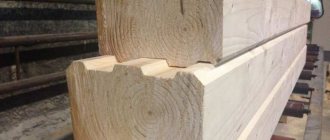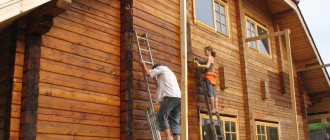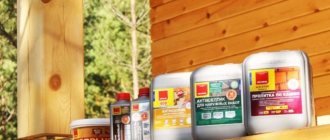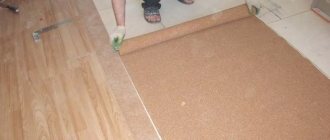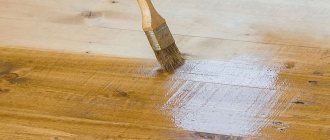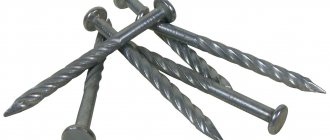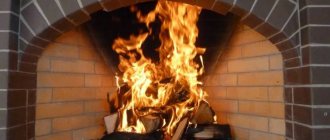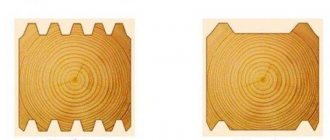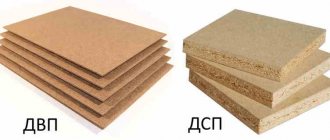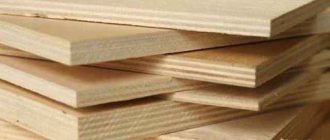by Alexey | Crafts Tools Workshop | Wednesday, January 26, 2022
| Follow Make-Self.net on Facebook and be the first to read our articles. |
Whether it's a piece of furniture or a piece of art, you should know which wood is best for your next project. Different types of wood have different shades and properties, making them a good choice for different types of products.
This article will focus on natural wood, but this does not mean that engineered wood cannot be used for woodworking. Many craftsmen use fiberboard and MDF for certain projects because of their flexibility and versatility. However, it is important to understand some of the most popular natural species that are used for woodworking.
Pine
Pine is a type of softwood that is very easy to work with. It is easy to cut and drill . Pine usually has a light yellow coloration that can really brighten up any interior. Once treated, pine wood is very easy to stain if you want to give it a different tone. But the softness of pine is also its disadvantage, which leads to dents and scratches.
Pine is generally intended for indoor use unless it has been treated for outdoor use. It is widely known as one of the best woods for beginning woodworkers.
Cedar - expensive and reliable
A huge part of cedar wood is exported, so it is not so easy to get it here, and it is expensive. Cedar is valued for its many benefits :
- resistance to high temperatures and humidity, which is achieved due to the special fibrous structure of wood;
- high content of healing essential oils in wood;
- high strength and durability.
Scope of application : living quarters, kitchens, baths, saunas, bathrooms.
Oak
Oak is a harder wood that is easy for woodworkers to work with. It comes in white and red colors, with the white variety of wood being more widely used for furniture as it is more attractive. Red oak is slightly softer than white oak and is usually easier to find in hardware stores.
Oak is also rot resistant and can be used for exterior use if properly treated. The wood can last for many generations, making it ideal for creating heirlooms. Apart from furniture, you can also use oak for flooring and cabinets. You should know that oak regularly shrinks and swells due to humidity and temperature conditions, meaning that you must allow the oak to acclimatize in your workshop before using it.
Larch
Dense wood, not subject to rotting, not too tough for insects. Accordingly, the wood will not turn blue, and the service life of a larch house will be enough for several generations of residents. Larch has high natural fire resistance. Plus, it also looks aesthetically pleasing, the wood has a pleasant shade.
High density also has a downside: larch is difficult to process, it is colder than, for example, pine due to its high thermal conductivity. And when drying in a chamber, due to the high density, there is a greater risk of deformation - drying is uneven. Larch is the heaviest wood. Volumetric weight at humidity 12% - 650-800 kg/m3.
Larch wood contains essential oils (pinene), has a fairly strong pleasant odor and includes bioflavonoids and phytoncides - microscopic volatile substances that evaporate during the entire period of use and have a positive effect on health, preventing colds and viral diseases.
Larch is a fairly expensive material in the European part of the Russian Federation and can be more than 50% more expensive than pine. In Siberia, where larch mainly grows, the cost of houses made of larch is comparable to pine.
Maple
Maple is a beautiful hardwood that comes in two main varieties: hard maple and soft maple . Soft maple is the preferred choice for many because it is less demanding on tools. Both types of maple are harder than other types of wood. Their fine, straight grain provides exceptional stability, and maple is relatively inexpensive compared to other hardwoods. Because of its greater stability and attractive grain, maple is sometimes considered the best wood for furniture.
Material Density
The most important quality of wood is density. According to this indicator, all varieties are divided into:
- Soft. These include linden, aspen, spruce, pine, poplar, cedar, and chestnut.
- Solid. Larch, maple, birch, oak, ash, beech, walnut.
- Very hard. Rowan, dogwood, boxwood and others.
The latter are practically not used in mass furniture production due to inflated prices due to the difficulties of creating products.
Solid oak bed
Poplar
As one of the softest hardwoods, poplar is very easy to shape and cut. It is inexpensive compared to other hardwoods. Poplar is not the most attractive wood, being white with brown or green veins.
Because wood is not very attractive, it is usually only used for furniture that is going to be painted or for the inside of dresser frames and drawer slides. It is also regularly used for model making and craft projects.
Which tree to choose for building a house?
The number of people wishing to build their home from rounded logs is increasing. But what kind of wood should you choose to make your house warm, comfortable and strong for many years? What type of wood do you prefer?
Before selectively approaching a particular tree, which will later become a home, you should familiarize yourself with its features. So, …
Pine wood
Pine is a tree with a straight trunk. Its age can reach 4-6 centuries, and its height can be more than 40 meters.
Pine wood is soft, resistant to cracking when dried, and easy to process. The color of the stem core is similar to the sapwood - yellow-white. The knots are located in the core, and the shoots are directed upward; when cut, they appear in the shape of an oval. Resin pathways are multiple and large. The rich colors and pronounced structure of wood make it the most popular building material not only in the construction of buildings, but also in the creation of various crafts (turning, art), and carpentry products.
Pine is divided into two varieties: dry chips and tar. Dried wood chips contain a minimum amount of resin, while tar contains the maximum. From this it is clear that tar is advantageous to use in places with high dampness (shipbuilding, construction of piers, bridges, moorings), while dry wood chips are used for structures not designed for heavy loads. Moreover, it is simply cut, planed, etched and painted.
Spruce wood
Spruce, like pine, is a coniferous tree; it has a straight trunk that can reach more than 50 m in height during its “life” of 3 centuries. Its wood is considered a very good building material, and therefore in demand (after pine).
Spruce wood is light, soft, and has no core. It has a uniform white color with a hint of gold, which can last for a long time. Spruce knots are arranged whorled, almost straight, which is why they appear round in cross-section.
Spruce is not very resinous. It is very resistant to cracking, although it creates some difficulties when processing very hard knots. But, despite these difficulties, in most regions it is spruce that is the most popular for the construction of log houses, as it allows you to ultimately create an environmentally friendly and fragrant home (this is confirmed by the saying: “a spruce hut is a healthy heart,” which has been around for a long time) .
Oak wood
The deciduous oak tree has a fairly long lifespan - for it 1000 years is not the limit. During this time, it increases significantly not so much in height as in the diameter of the trunk (its diameter can be more than 2-3 meters). And it should be noted that the value of oak increases with its “years”. After all, it was not for nothing that ancient masters preferred oak when building wells, huts, bridges, parts for ships and other things. And all because oak wood is not afraid of rot and other pests, easily tolerates sudden atmospheric changes, and is suitable for any climatic conditions.
The value of oak can be proven by information from past centuries. For example, during the reign of Peter I, a fine of “10 rubles” was imposed for cutting down any tree, but cutting down an oak tree was punishable by death. Why is oak so valuable and why is it not subject to various negative factors? The secret is simple, it turns out - the oak core is “non-living”, consisting of toxic substances called till. They are the ones who save the wood, making it seem preserved. It is clear that the best wood is located close to the core, it does not crack or warp.
The color of the oak core is light brown and dark brown, and the narrow sapwood is yellow-brown. The rays of the core are well developed and visible in sections. The shallow vessels of the annual layer are arranged in radial rows along the direction of the fibers.
Oak wood bends, is susceptible to cracking, can be painted and stained, and is endowed with an interesting texture. It is difficult to cut, as it has very high strength. When processed with a cutter, it shows its fragility, and therefore only a sharp tool can cope with it, and then only to create large carvings, since small parts of the design are unclear. When creating joinery, oak wood that is at least twenty years old is preferred. And yes, you should always take into account the connecting type, especially if it faces the face, because the end of the board is darker!
Cedar wood
Cedar is a heartwood tree, it has a straight trunk, and in 2-3 centuries it can reach 40 meters in height and almost 2 m in diameter. It is a light wood and soft, with a narrow heartwood of a pinkish hue, with yellow-white sapwood. The resin paths are numerous and large (much larger than other coniferous trees), the location of the knots is whorled. They are distinguished by the plural number of shoots.
Cedar wood has an interesting texture, resistance to cracking and rot, and is easy to process (it can be cut any way you want). Having such valuable wood with unique features, cedar is rightfully considered a noble species. It was cedar pine that the Siberian and Ural aborigines preferred to use in the construction of houses, since they knew that in the end they would receive a durable house for a long time, in which a persistent, healing aroma would settle. Today, cedar wood is expensive and not available to everyone.
Linden wood
The soft linden tree has uniform wood. It is milky in color with a slightly pinkish tint, and has multiple heart-shaped rays.
Linden wood has decent toughness, can be cut in all directions, is not subject to cracking and practically does not warp, and is easy to paint and polish. Previously, these trees were purchased to build bathhouses (linden holds steam for a long time) and barns (the tree is not susceptible to rodents). And, of course, to create works of artistic direction!
Hardwood
I would like to immediately note that the tree is located somewhat differently from the others. This is due to the fact that larch has very high strength and an unusually beautiful texture. Being a resinous, durable material, larch wood requires high processing costs, which significantly affects its cost. Well, now to the point.
Larch, as a coniferous core tree, can live within 6 centuries and reach more than 45 meters in height. Its sapwood is narrow. When cut along the grain, the wood appears striped, creating an interesting texture. Its knots are horizontal and have a random, single scatter.
Larch, as a building material, is very valuable in the construction of water structures. It is not afraid of water (it makes it even harder), is not subject to destruction by insects and fungi, does not require special chemical treatment, and in general is a natural antiseptic. Want an example? Here: the piles of St. Isaac's Cathedral, built on swamps in St. Petersburg, are made of larch. It is also thanks to leafy stilts that Venice floats on the water...
According to various properties (physical, mathematical), the durability of deciduous wood is between the hardness of oak and the softness of pine. Larches also lead in other parameters: they have 2 times better fire resistance and several times higher heat capacity than pine trees. And in general, in terms of consumer properties, objects made of larch (using rounded logs) give a head start to identical objects made of pine. What does this mean? The fact that, let’s say, a leafy house accumulates more heat: during heated periods, heat spreads evenly throughout all its rooms, while during hot periods, they retain a feeling of coolness.
Wood also has a good effect on human health. People living in a leafy house almost completely get rid of the symptoms of migraines and neuroses (arising from vascular spasms), colds and viral diseases, and hypertension. This is due to the fact that deciduous wood secretes phytoncides over a long period of time, which, entering the human body through respiration, accelerate metabolism and the resorption of hemorrhages, and significantly improve vision.
As a conclusion, a little advice: when constructing residential premises, you can use wood from any tree, as long as it is healthy and free of any flaws. But for outbuildings, you should select the most suitable tree. For example, it is better to build a bathhouse from pine or linden, but if this is not possible, then at least it should be finished using linden or pine wood.
All useful information
Birch
Birch is one of the hardest hardwoods, with yellow and white tones. White birch has a lighter color and is similar in appearance to maple. Yellow birch is pale yellow in color with a reddish-brown tinge in the heartwood. Both types of birch are easy to process and not as expensive as other hardwoods.
One thing to watch out for when working with birch is that it can be difficult to stain because the wood can become mottled. Therefore, birch is best for projects where you only plan to varnish. Birch is commonly used to make high quality furniture, toys and toothpicks.
Ash
Ash is white to pale brown in color and has a straight grain. It is one of the hardest types of wood, but it is easy to work with. It is very similar to oak, with similar characteristics and strength.
A big problem with ash is that it is becoming increasingly difficult to find. You probably won't be able to buy it at your local hardware store, but it is often sold at lumber yards. Although it is more difficult to find, it is usually sold at an affordable price. You can use ash for a variety of projects, such as furniture, hockey sticks, curved boat parts, and tool handles.
Advantages of solid wood beds
In addition to beauty, wood has many practical advantages. It is environmentally friendly, hypoallergenic, and load-resistant.
Wooden furniture is not afraid of assembly and disassembly, for example, if you need to move the bed to another room or disassemble it for moving.
Unlike cheaper models made of fiberboard and chipboard, solid wood furniture will not become loose and will retain its reliability and stability.
When choosing a bed material, keep in mind that solid wood furniture should be protected from high humidity and frequent temperature changes. It is also important that objects made from solid wood are quite heavy, and they can only be placed on a flat, hard floor covering.
Models made of wood are more expensive than those made of other materials. At the same time, the cost of a bed made of pine and, for example, oak, can vary several times, which is explained by the different complexity of processing and the material itself.
The high cost of solid wood beds is justified by their impressive appearance and durability.
Proper care of a solid wood bed will extend its service life
Nut
The deep brown and dark color of walnut makes it a top choice. It is a fine-grained wood that is easy to varnish and looks great after polishing. Although it is one of the most expensive hardwoods, its beautiful appearance justifies the price for many woodworkers. It is also on the higher end of the hardness scale, but is not difficult to work with.
Many woodworkers use walnut for inlays and accents to add extra detail and visual interest to a project. The wood is also used to create furniture and musical instruments such as violins and guitars. It is even used to make weapons, as walnut fibers are dense, which gives it the ability to absorb shock.
What wood is suitable for beginner woodworkers?
Choosing the best wood for you will depend on personal preference and the type of project you want to complete. In general, however, if you're getting started with woodworking and expect mistakes, it's usually best to choose some of the least expensive woods, such as soft maple, poplar, pine, and fir . You can also choose the wood listed above that is easy to work with and will not wear out your tools quickly.
Follow us on Pinterest for more interesting articles.
Useful short videos from Make-Self.net
